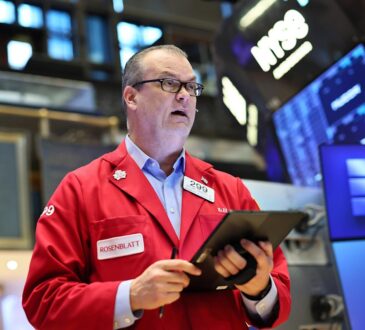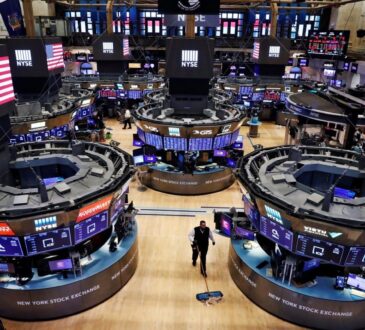
US stocks closed a volatile week with a flash of optimism as investors mounted a comeback off promising inflation data and hardening expectations of coming interest-rate cuts.
The Dow Jones Industrial Average (^DJI) added 1.6%, or more than 650 points. The S&P 500 (^GSPC) rose about 1.1%, while the Nasdaq Composite (^IXIC) put on 1% although both indexes were in the red for the week.
Stocks turned positive after a turbulent series of sessions. The Nasdaq and the S&P 500 have taken a bruising as Big Tech earnings undermined confidence in the AI trade, spurring the ongoing exodus from megacaps into small cap stocks.
The Nasdaq shed 2% over the week, while the S&P lost about 1%. Only the Dow emerged with a win, gaining roughly 1%.
That pause in this year’s rally has Wall Street questioning whether the sell-off is a turning point to sustained lower prices or a typical bull-market pullback. In play are earnings-fueled concerns about softness in the US economy, though Thursday’s surprisingly hot GDP print eased those somewhat.
Friday’s big data point was the closely watched Personal Consumption Expenditures (PCE) index, which provided more fuel to the notion of a still-strong economy and gradually cooling inflation. “Core” PCE, which strips out the cost of food and energy and is closely watched by the Fed, came in slightly higher than expectations but rose at its slowest pace in over three years.
The encouraging reading sets the stage for next week’s Fed policy meeting. Officials are widely expected to keep interest rates unchanged. But many anticipate the huddle to be the last before the central bank begins lowering rates in September.
Read more: 32 charts that tell the story of markets and the economy right now
Investors are also getting set for quarterly earnings next week from four more “Magnificent Seven” techs — Apple (AAPL), Microsoft (MSFT), Amazon (AMZN) and Meta (META).
LIVE COVERAGE IS OVER11 updates



